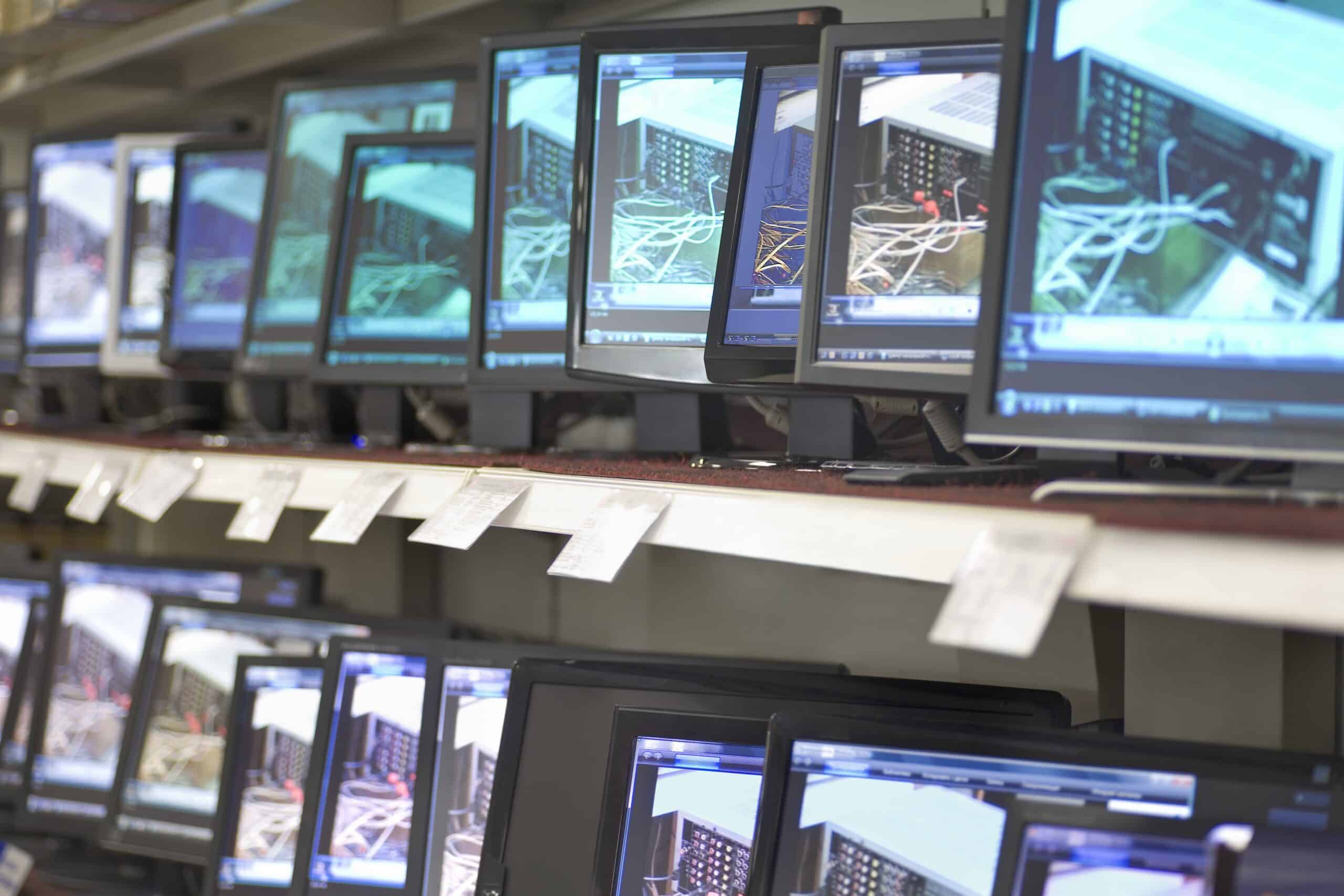This blog is dedicated to mobile computing, or working while on the go, and one of the topics I wanted to cover was mobile monitors. These weren’t really practical when I still traveled a lot back before the pandemic, but thanks to the rise of USB-C and advances in screen tech, we now have a lot of options ranging from cheap to pricy.
I was all set to buy several portable monitors and write reviews, but as I got deeper into background research I realized that it would be more useful to start with a post that covers all of the alternate solutions which serve the same purpose.
So if you need a second monitor for working while on a trip, here are a few of your options.
The TV in your hotel room
Virtually every hotel/motel room has been upgraded with a flat screen TV, and most models will have a port in the back where you can plug in an HDMI cable. If you plug the other end of that cable into your laptop, you have a 32” (or larger) monitor.
Yes, this is location-limited, but I for one like working from the peace and quiet of my hotel room, so this is a great solution for me. All it costs me is about $8 for the HDMI cable.
A tablet (Android or iPad)
I don’t have a tablet large enough for this to be worthwhile, but one of your options for a second monitor is to use either an Android tablet or an iPad. There are apps for both Android and iOS which will enable you to use your tablet as both a display and input device.
A cheap desktop monitor
This isn’t quite as functional as a true portable monitor, but if you are short on funds or happen to have an extra monitor sitting around, you could always bring along a desktop monitor for use while you are away from your desk.
While this option does have the disadvantage of increased weight, it is a way to use that older monitor you might have sitting in the closet. (And I do in fact know someone who travels with 3 desktop monitors in their carryon luggage.)
A small flat screen TV
This is an option which I would avoid, actually. While there are smaller TVs out there and you could use one as a portable monitor, all of the ones I found on Amazon.com and Walmart.com had 720p screen resolution, and many actually cost more than a true portable monitor.
If you happen to have an older TV, you might use it. But I would not buy a smaller TV for this purpose, not when a true portable monitor can be had for less.
A portable monitor
If you have money to spare or need added functionality (like a touchscreen), you could get a true portable monitor like the ones reviewed over at PC Magazine. There is a wide selection of portable monitors on the market, with prices ranging from around $150 to $500 or more. The screen resolution and capabilities also vary widely, with many of the more expensive models coming equipped with touchscreens.
The advantage that a true portable monitor has over regular monitors is that most are designed with a stand that folds up. This enables you to carry the monitor in the same gear bag as your laptop and other electronics (and yes, portable monitors are generally light enough that this is a viable option).
Oh, and if you do go this route, may I also recommend that you buy a fold-up riser or stand for your monitor. I like to have my monitors stacked one over the other rather than side by side, and since there’s no way to guarantee that I will find a suitable stand where I am working, I would expect that I’d have to bring one with me.
So how would you solve this problem?





0 Comments